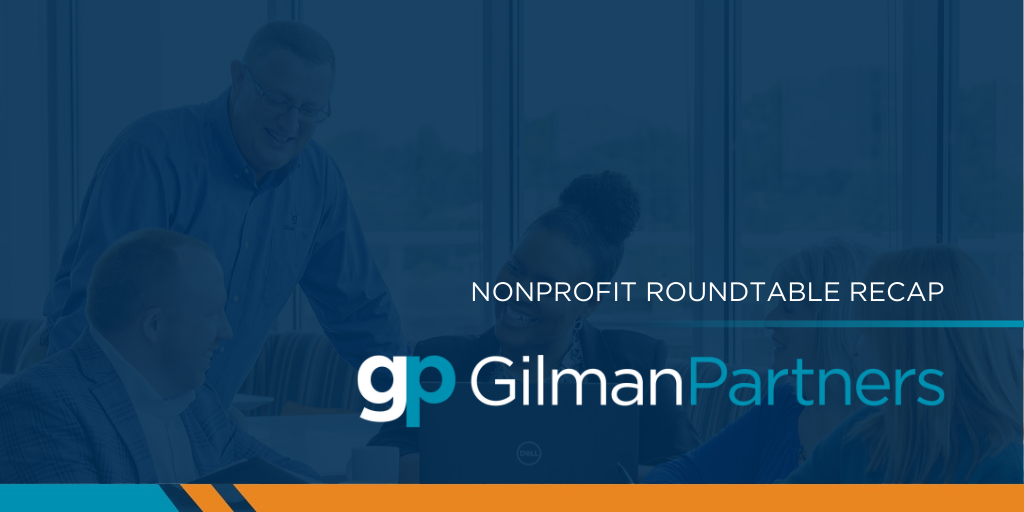Gilman Partners’ HR Practice Team hosted a virtual roundtable with more than 20 HR leaders from across the Tri-State area. The focus of the conversation was how organizations are recovering from the Covid-19 crisis and the steps employers are taking to bring employees back to the workplace. Here are just some of the highlights from the discussion:
In addition to requirements like masks, temperature checks, and social distancing, some of the organizations are taking the following precautions to keep their employees safe and well:
- Mandatory breaks for employees throughout the day to wash hands
- Signage throughout the building with social distancing reminders and notices about maximum occupancy
- Chairs removed from common spaces (like kitchens and conference rooms) to allow for appropriate social distancing. Some organizations have closed common areas entirely.
- Some organizations are purchasing boxed meals for employees since they cannot have access to the refrigerator and microwave in the kitchen. One organization even taped Xs to the floor to show employees how far apart to stand to pick up their lunches.
- One manufacturing facility moved large pieces of equipment to provide required social distancing between workers.
- One organization said it’s allowing workers to go beyond their allotted number of PTO days to ensure they aren’t coming to work sick.
- One organization physically separated its logistics team from its manufacturing team so if someone gets sick it doesn’t mean the entire operation is shut down.
Most of the organizations represented in our roundtable suggested their return-to-work timelines will be more conservative than state and federal guidelines.
- One organization is implementing a color-coded re-entry system that slowly increases the number of employees who return to the office. The organization doesn’t expect the final phase – complete re-entry – to be implemented until 2021.
Return-to-work policies are even more complex when employees need to travel domestically or globally to work with clients.
- The HR leaders talked about the importance of understanding the varying policies in each state/nation and worry clients may only be willing to accept on-site contractors who come from places with fewer reported cases of the virus or more strict social distancing restrictions.
Several of the HR leaders shared frustrations about lack of testing for the virus. They have had employees tell colleagues they have the virus (despite clearing company-sponsored temperature and health checks), but unless they fall into specific high-risk groups it is difficult to get them tested.
How they will handle employee PTO/vacation time was a big question shared by the majority of roundtable participants.
- Many employees cancelled time off requests previously scheduled for this spring and early summer. There is a concern that many of them will want to be out of the office this fall and there won’t be enough staff available to support operations and clients
- Some organizations will require employees to take time off this spring, some will change PTO carryover rules into 2021, and some are considering assigning employees to vacation weeks to prevent too much overlap.
Some organizations deemed essential are offering increased pay to employees during this time.
- One organization said it is offering up to a 25% increase in hazard pay for its manufacturing workers.
- Another organization has added a pay increase for employees who are required to be in the office at least 50% of the time each week. Hourly salaries have gone up by $1-2/hour and salaried workers are seeing an extra 10%.
Unfortunately, other organizations are having to lay off and furlough employees or reduce salaries and benefits.
- One organization first shared news of temporary pay cuts with executive- and mid-level leaders. After having a weekend to process the information and collect their thoughts, the leaders were invited to attend a virtual roundtable to share all of their questions and concerns. The HR team collected the comments expressed during the roundtable to create an extensive Q&A document that was shared with the rest of the employees as they learned about the temporary cuts to their own salaries a few days later.
Even as organizations are allowed to begin opening back up, the HR leaders recognize that childcare remains a huge challenge for many workers. Most said they’re being flexible and plan to allow WFH employees to continue this as necessary.
The HR leaders shared a number of ways they are engaging with employees and working to keep their organization’s values and culture strong:
- One organization encourages employees to send videos of their children reading goodnight stories. The HR leader posts the videos to a private YouTube page and shares them daily with the entire organization.
- CEOs are recording messages to employees which are posted on the same site employees go to view pay information.
- One organization has been encouraging employees to contribute recipes to a digital cookbook.
- Several organizations are implementing wellness strategies including a virtual relay race, fitness challenges, and Wellness Wednesday activities and tips.
- One organization is taking a cue from the popular MTV Cribs show and encouraging employees to show off parts of their home or objects that are important to them.
- One HR leader said she is dropping into departmental Zoom calls for just a few minutes to check in on employees and see if they need anything.
The efforts to engage WFH employees these past few weeks have been especially appreciated by those team members who already worked remotely. One remote employee noted that after her colleagues start returning to the office, she hopes opportunities for Zoom calls will still exist so she continues to feel the connection she has experienced in recent weeks.




